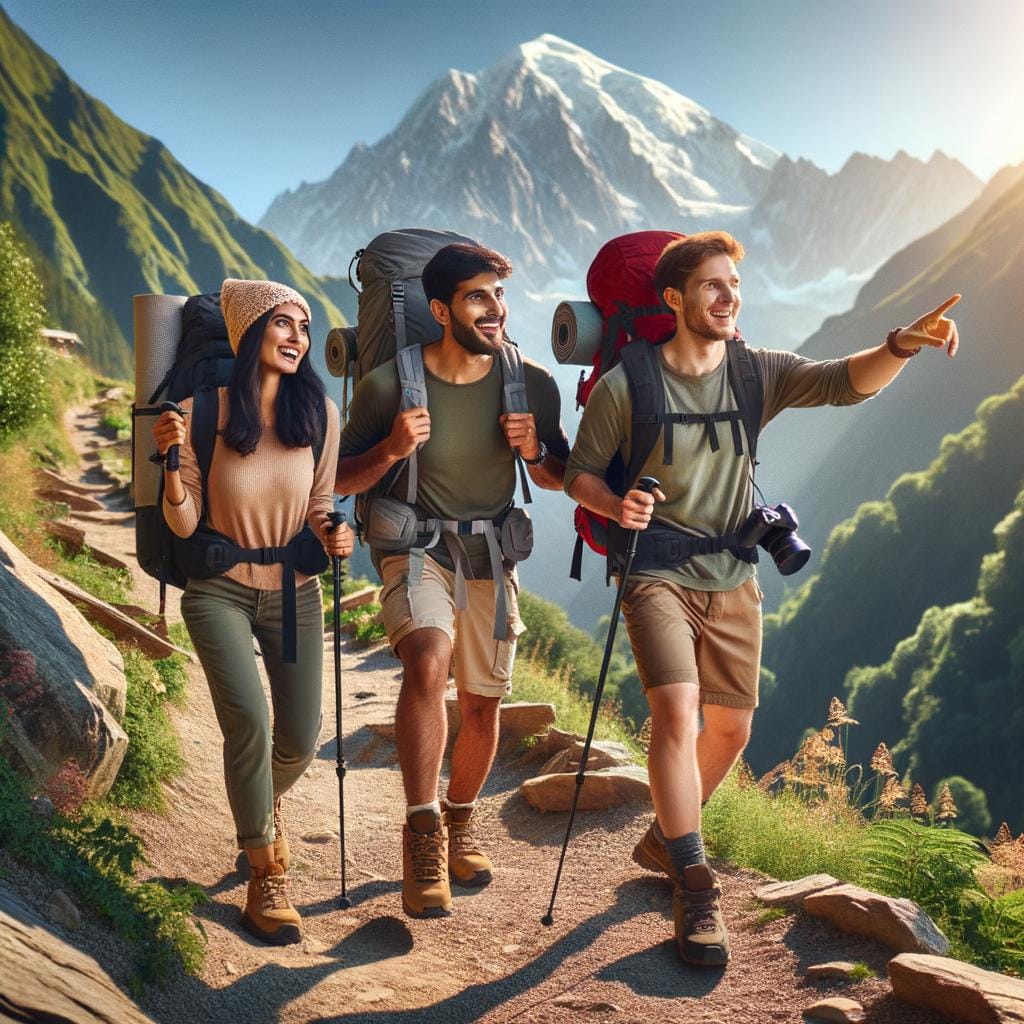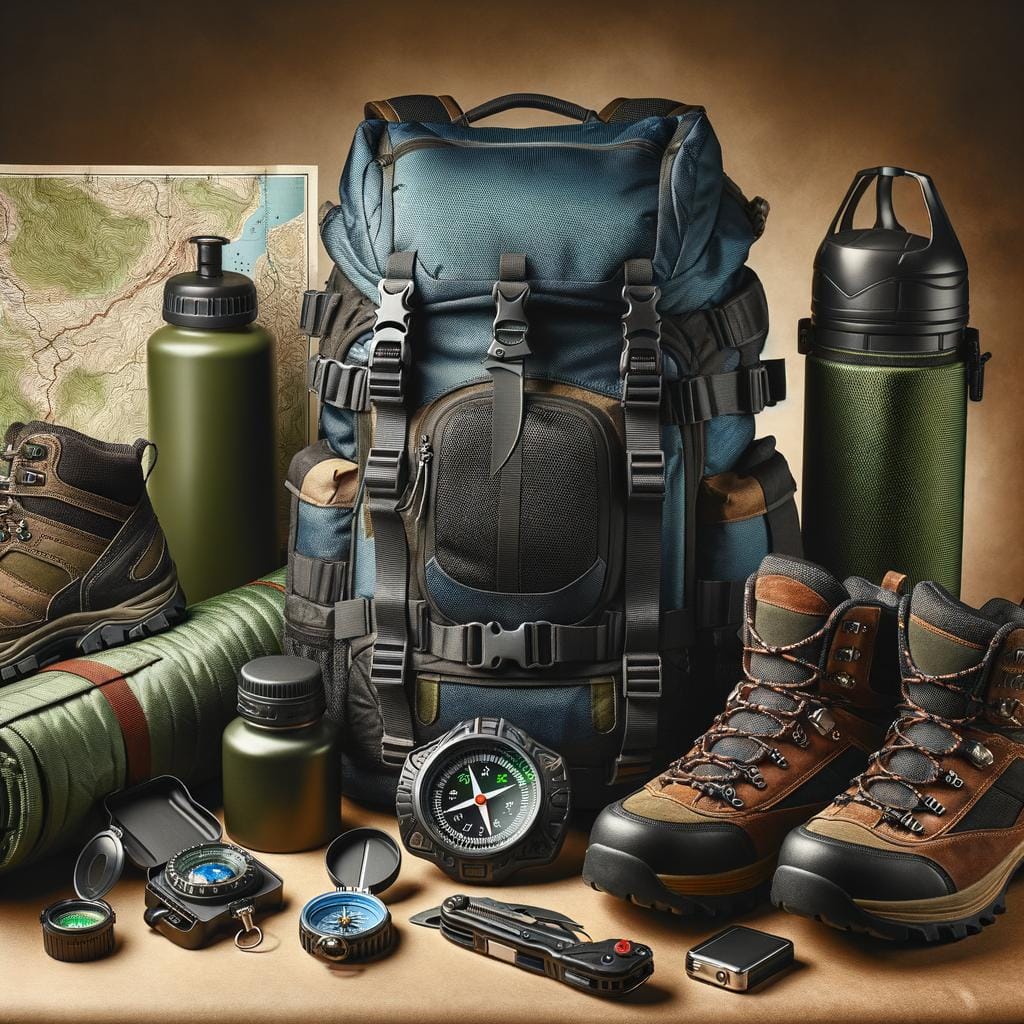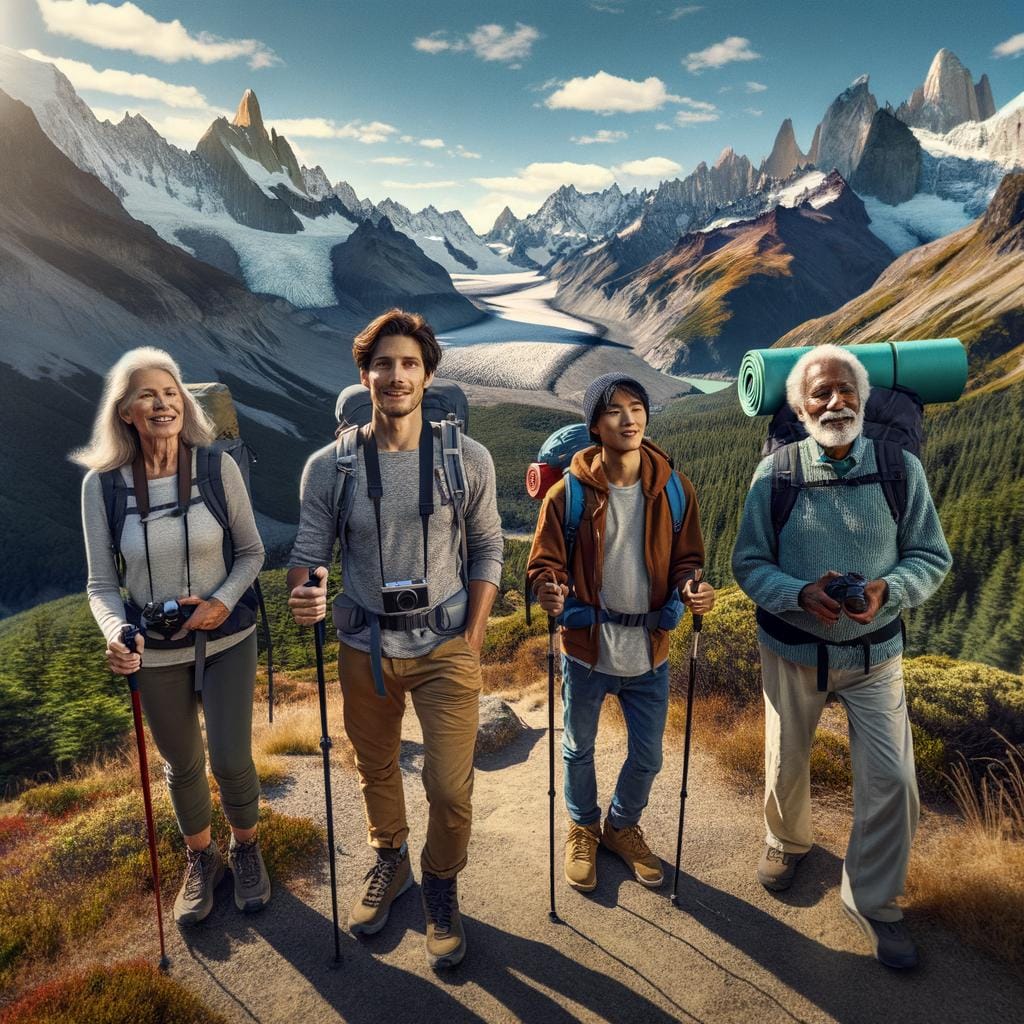Embarking on trekking adventures is more than just a thrilling outdoor activity – it’s an experience that allows you to immerse yourself in nature, challenge your limits, and create unforgettable memories. Whether you’re a seasoned hiker or a beginner looking to explore new terrain, trekking offers a unique way to connect with the great outdoors and push yourself beyond your comfort zone.
The allure of trekking adventures lies in the diverse landscapes and environments that await intrepid travelers. From winding mountain trails to lush forests, rugged canyons, and picturesque coastlines, there is a trekking destination for every type of adventurer. Choosing the right trekking destination is crucial to ensuring a fulfilling and rewarding experience, as each trail offers its own set of challenges and rewards.
As you prepare for your trekking adventure, it’s essential to pack the right gear and equipment to ensure your safety and comfort along the way. From sturdy hiking boots and moisture-wicking clothing to camping essentials like a reliable tent and sleeping bag, being well-equipped can make all the difference during your expedition.
Additionally, physical and mental preparation play a key role in tackling the demands of trekking adventures, so be sure to train your body for endurance and develop a positive mindset to overcome any obstacles that may arise on the trail.
Choosing the Right Trekking Destination
Embarking on a trekking adventure is an exhilarating experience that allows you to immerse yourself in nature, challenge your limits, and create unforgettable memories. One of the first crucial decisions you’ll need to make is choosing the right trekking destination. With countless trails around the world offering different terrains, landscapes, and levels of difficulty, it’s essential to pick the perfect trail that aligns with your preferences and abilities.
To help you narrow down your options and find the ideal trekking destination, consider factors such as your fitness level, time frame, budget, and personal interests. Whether you’re seeking a leisurely day hike through lush forests or a challenging multi-day trek across rugged mountains, there’s a trail out there waiting for you. Below are some tips to guide you in selecting the right trekking destination:
- Research various treks based on difficulty level and length
- Consider the climate and seasonality of the destination
- Take into account any travel restrictions or permits required
By taking these factors into consideration, you can ensure that your trekking adventure is not only enjoyable but also safe and rewarding. Remember that the journey itself is just as important as reaching the final destination, so choose wisely and get ready to embrace all that nature has to offer on your upcoming trek.
Essential Gear for Your Trekking Adventure
When embarking on a trekking adventure, it is crucial to pack the right gear to ensure a safe and enjoyable experience. The gear you bring can make a significant difference in your comfort level, safety, and overall enjoyment of the trek.
Footwear
One of the most important pieces of gear for any trekking adventure is proper footwear. Investing in a good pair of hiking boots that provide ankle support and have a sturdy sole can prevent blisters, provide stability on uneven terrain, and protect your feet from sharp rocks or thorns. It is essential to break in your hiking boots before hitting the trail to avoid discomfort or potential injuries.
Clothing
Choosing the right clothing for your trek is essential in ensuring that you stay comfortable throughout your journey. Opt for moisture-wicking fabrics that will keep you dry and insulated while hiking. Layering is key, as temperatures can fluctuate throughout the day. Pack items like a waterproof jacket, fleece pullover, quick-dry pants, and extra socks to be prepared for any weather conditions.
Essentials
In addition to proper footwear and clothing, there are several other essentials that every trekker should pack for their adventure.
These include a backpack with adjustable straps and compartments for organization, a reliable map or GPS device, plenty of water or a water filtration system, high-energy snacks like nuts or granola bars, a first aid kit with essentials like bandages and pain relievers, sun protection such as sunscreen and sunglasses, and a headlamp or flashlight for navigating in low light conditions.
Being prepared with these essentials will help ensure a successful trekking adventure.
Physical Preparation
Trekking adventures require a certain level of physical fitness to fully enjoy the experience and avoid fatigue or injury along the way. Before embarking on your trek, it’s essential to engage in a consistent fitness routine that includes cardiovascular exercises, strength training, and flexibility work. Cardiovascular exercises such as running, cycling, or swimming can help improve your endurance for long hours of walking on challenging terrain.
Strength training focusing on your lower body muscles like quads, hamstrings, and calves will provide the necessary strength to tackle steep inclines and descents on your trek. Additionally, incorporating flexibility exercises like yoga or stretching routines can prevent muscle strains during your hike.
It’s recommended to start your physical preparation well in advance of your trekking adventure to allow your body enough time to adapt and build the necessary stamina for the journey ahead. Gradually increase the intensity and duration of your workouts as you progress towards your trekking date.
This incremental approach will not only improve your physical condition but also reduce the risk of overuse injuries from pushing yourself too hard too soon. Stay hydrated during your workouts and ensure you are consuming a well-balanced diet rich in nutrients that support muscle recovery and endurance.
As part of your physical preparation for trekking adventures, consider practicing walking with a loaded backpack to simulate the weight you’ll be carrying during your hike. This will help condition your body to handle the additional weight and prepare you for the challenges of trekking with a pack on uneven terrain.
Moreover, incorporating uphill and downhill walking into your training regimen can mimic the elevation changes you’re likely to encounter during the actual trek. By focusing on both cardiovascular fitness, strength training, flexibility exercises, proper nutrition, and specific trekking-related preparations, you’ll set yourself up for a successful and enjoyable trekking adventure.
| Physical Preparation Tips | Key Points |
|---|---|
| Engage in cardiovascular exercises | Improve endurance for long treks |
| Incorporate strength training | Strengthen lower body muscles for hills |
| Include flexibility exercises | Prevent muscle strains during hikes |
Mental Preparation
Stay Positive and Keep Motivated
During a trekking adventure, it’s normal to encounter obstacles such as steep inclines, unpredictable weather conditions, or unforeseen changes in the itinerary. It’s important to maintain a positive mindset and stay motivated even when faced with challenges. Remind yourself of the reasons why you embarked on this adventure in the first place and focus on achieving your goals one step at a time. Celebrate small victories along the way to boost your morale and keep moving forward.
Practice Mindfulness and Stay Present
The beauty of trekking adventures lies in immersing yourself in nature and disconnecting from the distractions of daily life. Take this opportunity to practice mindfulness by being fully present in the moment. Pay attention to your surroundings, listen to the sounds of nature, feel the rhythm of your steps, and appreciate the beauty of the landscapes around you. Mindfulness can help reduce stress, increase self-awareness, and enhance your overall experience on the trail.
Embrace Challenges as Opportunities for Growth
Every challenge you face during a trekking adventure presents an opportunity for personal growth and development. Instead of viewing obstacles as setbacks, see them as chances to learn more about yourself, build resilience, and strengthen your determination.
Embracing challenges with a growth mindset will not only enhance your trekking experience but also equip you with valuable skills that you can carry forward into other aspects of your life. Remember that overcoming challenges on the trail is part of what makes trekking adventures truly rewarding.
Safety Tips for Trekking Adventures
Trekking adventures can be exhilarating and unforgettable experiences, allowing you to immerse yourself in the beauty of nature while challenging your physical and mental limits. However, it is crucial to prioritize safety during your trek to ensure a smooth and enjoyable journey.
One of the essential safety tips for trekking adventures is to always inform someone about your itinerary before setting out on the trail. This information can be crucial in case of emergencies or if you fail to return as planned.
Another important aspect of staying safe during trekking adventures is being prepared for unexpected weather changes or emergencies. It is recommended to pack essentials such as a first aid kit, extra clothing layers, waterproof gear, navigation tools, and sufficient food and water supplies. In addition, familiarize yourself with the trail map and terrain before starting your trek to avoid getting lost. Being proactive and well-prepared can significantly reduce the risks associated with outdoor adventures.
Moreover, when embarking on a trekking adventure, it is vital to prioritize self-care and listen to your body throughout the journey. Pace yourself appropriately, take breaks when needed, stay hydrated, and watch out for signs of exhaustion or altitude sickness.
By taking care of your physical well-being and being mindful of your limitations, you can prevent accidents or health issues during your trek. Remember that safety should always be a top priority when venturing into the great outdoors for a trekking adventure.
| Safety Tips | Trekking Adventures |
|---|---|
| Inform someone about your itinerary before setting out | Crucial for emergencies or unexpected situations |
| Pack essentials like first aid kit, extra clothing layers, waterproof gear | Being well-prepared reduces risks during outdoor treks |
| Listen to your body; pace yourself and prioritize self-care | Prevent accidents by being mindful of physical well-being |
Capturing the Moment
Embarking on a trekking adventure provides not only the opportunity to challenge oneself physically, but also to witness breathtaking landscapes and immerse oneself in nature’s beauty. Documenting these moments through photography can help capture the essence of your trek and allow you to relive the experience long after it has ended.
Whether you’re a seasoned photographer or just starting out, there are a few tips that can enhance your trekking photography skills and ensure you come away with stunning images.
One key tip for capturing memorable moments during your trek is to always be prepared. This means having your camera easily accessible, whether it’s around your neck or in a convenient pocket. You never know when the perfect photo opportunity will present itself, so being ready to snap a shot at a moment’s notice is essential. Additionally, make sure your camera equipment is lightweight and durable enough to withstand the rigors of trekking through various terrains.
Another important aspect of photography during a trekking adventure is understanding how to compose visually striking shots. Pay attention to elements such as framing, leading lines, and perspective to create dynamic and engaging photos. Experiment with different angles and focal points to add depth and interest to your images.
Don’t be afraid to get creative with your compositions – sometimes the most unique photos come from thinking outside the box. By honing your photography skills while on the trail, you can capture not just images, but memories that will last a lifetime from your unforgettable trekking adventures.
Indulge in the Culinary Delights
Embarking on trekking adventures not only offers stunning landscapes and exhilarating challenges but also provides a unique opportunity to immerse oneself in the local culinary delights. Sampling the regional cuisine along the trail adds another dimension to the overall experience, allowing trekkers to truly connect with the culture and traditions of their destination. Here are some tips on how to enjoy local cuisine while on your trek:
- Research Local Dishes: Before starting your trek, take some time to research traditional dishes and specialties of the region you will be visiting. This can help you familiarize yourself with the flavors and ingredients commonly used in the local cuisine.
- Try Street Food: One of the best ways to taste authentic local flavors is by sampling street food along your trekking route. Be sure to choose vendors with good hygiene practices to avoid any stomach issues.
- Visit Local Markets: Make a pit stop at bustling markets or villages along your trek where you can purchase fresh produce, snacks, or even enjoy a meal at a small eatery. Interacting with locals and trying their homemade dishes can be a memorable experience.
Indulging in local cuisine on your trekking adventure can be a delightful sensory journey that complements the physical challenges of the trail. From savoring simple yet hearty meals prepared by mountain guides to trying exotic fruits or spices unique to the region, every bite contributes to enriching your overall experience. So, don’t hesitate to explore new flavors and culinary traditions as part of your unforgettable trekking adventure.
Embracing the Experience
In conclusion, embarking on trekking adventures is a thrilling and rewarding experience that allows you to connect with nature, challenge yourself physically and mentally, and create unforgettable memories. By choosing the right trekking destination, preparing yourself physically and mentally, packing essential gear, and following safety tips, you can ensure a successful and enjoyable journey.
One of the most important aspects of trekking adventures is embracing the experience fully. Take the time to immerse yourself in the surroundings, appreciate the beauty of nature around you, and savor every moment of your trek. Capture those special moments through photography, indulge in local cuisine to truly experience the culture of the area you are exploring, and push yourself out of your comfort zone to truly make the most out of your adventure.
Remember that trekking adventures are not just about reaching the final destination but also about enjoying the journey itself. Embrace the challenges you may face along the trail as opportunities for personal growth and discovery.
Whether it’s overcoming physical obstacles or mental barriers, each step you take on your trekking adventure will bring you closer to a deeper understanding of yourself and a greater appreciation for the world around you. So lace up your hiking boots, pack your bags, and get ready for an unforgettable journey filled with exploration, self-discovery, and incredible experiences.
Frequently Asked Questions
What Is Difference Between Hiking and Trekking?
Hiking and trekking are often used interchangeably, but there are some key differences between the two. Hiking generally refers to shorter walks on well-maintained trails or paths, usually lasting a few hours to a full day.
On the other hand, trekking involves longer journeys over more challenging terrain, often requiring multiple days or even weeks to complete. Trekking also typically involves carrying heavier backpacks and camping overnight.
What Is Considered Trekking?
Trekking is considered traveling on foot through rugged terrain or remote areas for an extended period of time. It often involves navigating through forests, mountains, deserts, or other natural landscapes that are not easily accessible by vehicle. Trekking can range from moderate difficulty to extremely challenging adventures, depending on the location and duration of the journey.
Which Place Is Best for Trekking?
Determining the best place for trekking depends on individual preferences and skill levels. Some popular trekking destinations include the Himalayas in Nepal, the Inca Trail in Peru, Torres del Paine National Park in Chile, and the Appalachian Trail in the United States.
Each of these locations offers unique landscapes, wildlife, and cultural experiences for trekkers seeking adventure and exploration in different parts of the world. Ultimately, the best place for trekking is subjective and varies based on personal interests and abilities.

An avid outdoor enthusiast, writer, and environmental advocate who has spent over two decades exploring the world’s most breathtaking landscapes. With a background in environmental science and a passion for adventure, Frances combines her love for nature with her talent for storytelling to inspire others to embark on their own outdoor journeys.





